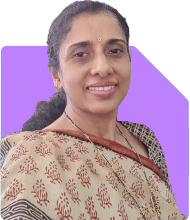Ramalingam Kalirajan |8324 Answers |Ask -Follow
Mutual Funds, Financial Planning Expert - Answered on Jul 02, 2024
He has an MBA in finance from the University of Madras and is a certified financial planner.
He is the director and chief financial planner at Holistic Investment, a Chennai-based firm that offers financial planning and wealth management advice.... more

I am 50 years old how to invest mutual fund for retirement fund Currently I am investing 4k in mutual fund 1k in ppf kindly suggest.
Understanding Your Current Investments
First, it’s commendable that you have started investing. The discipline to save and invest regularly is the key to financial success. Your current investment of Rs. 4,000 in mutual funds and Rs. 1,000 in PPF is a good foundation. However, we need to optimize your strategy to meet your retirement goals.
Compliments on Your Financial Discipline
It's impressive that you are already investing regularly. Many people struggle to save and invest, but you have taken proactive steps. This shows your commitment to securing your financial future.
Importance of Diversification
Diversification is crucial to manage risk and achieve optimal returns. Relying solely on one type of investment can be risky. By spreading investments across various asset classes, you can balance risk and return.
Advantages of Mutual Funds
Mutual funds are an excellent investment option for building a retirement corpus. Here’s why:
Professional Management: Fund managers with expertise manage your investments.
Diversification: Mutual funds invest in a variety of securities, spreading risk.
Liquidity: Easy to buy and sell mutual fund units.
Power of Compounding: Reinvesting returns can significantly grow your investment over time.
Tax Efficiency: Some mutual funds offer tax benefits under Section 80C of the Income Tax Act.
Categories of Mutual Funds
1. Equity Mutual Funds:
Equity mutual funds invest in stocks and have the potential for high returns over the long term. Given your age, a mix of equity funds can provide growth to your portfolio. Diversify across large-cap, mid-cap, and small-cap funds to balance risk and return.
2. Debt Mutual Funds:
Debt mutual funds invest in fixed-income securities, providing stability and regular income. These funds are less volatile than equity funds and offer better returns than traditional fixed deposits. Including debt funds will add stability to your portfolio.
3. Hybrid Mutual Funds:
Hybrid funds combine equity and debt investments, offering a balanced approach. These funds provide both capital appreciation and regular income. They are suitable for investors looking for moderate risk and steady growth.
Systematic Investment Plan (SIP)
A Systematic Investment Plan (SIP) allows you to invest a fixed amount regularly in mutual funds. SIPs help in averaging the cost of investment and reduce market timing risks. They instill a disciplined approach to investing, which is crucial for long-term wealth creation.
Power of Compounding
The power of compounding is a significant advantage of mutual funds. By reinvesting returns, your investment grows exponentially over time. Starting early and staying invested for the long term maximizes the benefits of compounding.
Creating an Emergency Fund
Before increasing your investments, ensure you have an emergency fund. This fund should cover 6-12 months of expenses and be kept in a liquid form like a savings account or liquid mutual funds. An emergency fund provides a safety net for unexpected financial challenges.
Increasing Your SIP Amount
Given your current age and investment goals, it’s advisable to increase your SIP amount. Start by increasing your mutual fund SIP to Rs. 6,000 or more per month. As your income grows, further increase the SIP amount. This incremental approach will help build a substantial retirement corpus.
Avoiding Real Estate as an Investment
While real estate might seem attractive, it has several disadvantages:
Illiquid: Real estate is not easy to convert to cash quickly.
No Easy Entry and Exit: Buying and selling property involves significant time and effort.
No 100% White Transaction: Real estate transactions often involve a component of black money.
No Partial Withdrawal: You cannot sell a part of the property if you need a small amount of cash.
Given these drawbacks, it's better to focus on more liquid and flexible investment options like mutual funds.
Life and Health Insurance
Adequate insurance coverage is essential to protect your family. Ensure you have sufficient life insurance, preferably term insurance, which provides a high sum assured at a low premium. Additionally, comprehensive health insurance is crucial to cover medical expenses.
Retirement Corpus Calculation
Estimate your retirement corpus considering factors like inflation, life expectancy, and desired monthly income. This will give you a clear target to aim for with your investments. A Certified Financial Planner can help you with detailed calculations and planning.
Disadvantages of Index Funds and Benefits of Actively Managed Funds
You might have heard about index funds, but they have certain disadvantages. Index funds simply track the market index and do not aim to outperform it. They might not provide the best returns in different market conditions. Actively managed funds, on the other hand, have professional fund managers who strive to outperform the market. They adjust the portfolio based on market trends, providing potential for higher returns.
Disadvantages of Direct Funds and Benefits of Regular Funds Investing Through MFD with CFP Credential
Direct funds might seem appealing due to lower expense ratios, but they come with their own set of challenges. Managing direct funds requires significant time, effort, and expertise. Regular funds, invested through a Mutual Fund Distributor (MFD) with a Certified Financial Planner (CFP) credential, offer professional guidance and management. The extra cost is justified by the value of expert advice, regular monitoring, and portfolio adjustments.
Regular Review and Rebalancing
Regularly reviewing and rebalancing your portfolio is essential. Market conditions and personal financial goals change over time. Rebalancing ensures your portfolio remains aligned with your risk tolerance and investment objectives. A Certified Financial Planner can assist with regular reviews and adjustments.
Children’s Education and Marriage
If you have children, plan for their education and marriage expenses. Create dedicated funds for these goals and invest in a mix of equity and debt mutual funds. Early planning ensures you build a sufficient corpus to meet these future expenses.
Estate Planning
Planning for the distribution of your assets ensures your family’s financial security. Create a will to specify how your assets should be distributed among heirs. Setting up trusts can help in managing and protecting your wealth. Estate planning provides peace of mind and ensures your wishes are honored.
Final Insights
Investing for retirement requires a well-thought-out strategy and disciplined execution. Here’s a summary of the key steps you should take:
Increase SIP: Increase your mutual fund SIP to Rs. 6,000 or more per month.
Diversify: Invest in a mix of equity, debt, and hybrid mutual funds for balanced growth.
Emergency Fund: Maintain an emergency fund covering 6-12 months of expenses.
Insurance: Ensure adequate life and health insurance coverage.
Avoid Real Estate: Focus on liquid and flexible investment options like mutual funds.
Regular Review: Regularly review and rebalance your portfolio.
Estate Planning: Plan for the distribution of your assets to secure your family’s financial future.
By following these steps and regularly reviewing your financial plan with a Certified Financial Planner, you can achieve a secure and comfortable retirement. Your disciplined savings and proactive approach will help you build a strong financial foundation for the future.
Best Regards,
K. Ramalingam, MBA, CFP,
Chief Financial Planner,
www.holisticinvestment.in
You may like to see similar questions and answers below
Ramalingam Kalirajan |8324 Answers |Ask -Follow
Mutual Funds, Financial Planning Expert - Answered on Apr 04, 2024
Ramalingam Kalirajan |8324 Answers |Ask -Follow
Mutual Funds, Financial Planning Expert - Answered on Jul 17, 2024
Ramalingam Kalirajan |8324 Answers |Ask -Follow
Mutual Funds, Financial Planning Expert - Answered on Jun 28, 2024
Ramalingam Kalirajan |8324 Answers |Ask -Follow
Mutual Funds, Financial Planning Expert - Answered on Aug 12, 2024
Dr Dipankar Dutta |1204 Answers |Ask -Follow
Tech Careers and Skill Development Expert - Answered on May 07, 2025
Dr Nagarajan J S K |374 Answers |Ask -Follow
NEET, Medical, Pharmacy Careers - Answered on May 07, 2025
Radheshyam Zanwar |1608 Answers |Ask -Follow
MHT-CET, IIT-JEE, NEET-UG Expert - Answered on May 07, 2025
Samraat Jadhav |2272 Answers |Ask -Follow
Stock Market Expert - Answered on May 07, 2025
Samraat Jadhav |2272 Answers |Ask -Follow
Stock Market Expert - Answered on May 07, 2025
Prof Suvasish Mukhopadhyay |621 Answers |Ask -Follow
Career Counsellor - Answered on May 07, 2025
Milind Vadjikar |1208 Answers |Ask -Follow
Insurance, Stocks, MF, PF Expert - Answered on May 07, 2025
Dr Deepa Suvarna |154 Answers |Ask -Follow
Paediatrician - Answered on May 07, 2025
Dr Nagarajan J S K |374 Answers |Ask -Follow
NEET, Medical, Pharmacy Careers - Answered on May 07, 2025
Ramalingam Kalirajan |8324 Answers |Ask -Follow
Mutual Funds, Financial Planning Expert - Answered on May 07, 2025




























